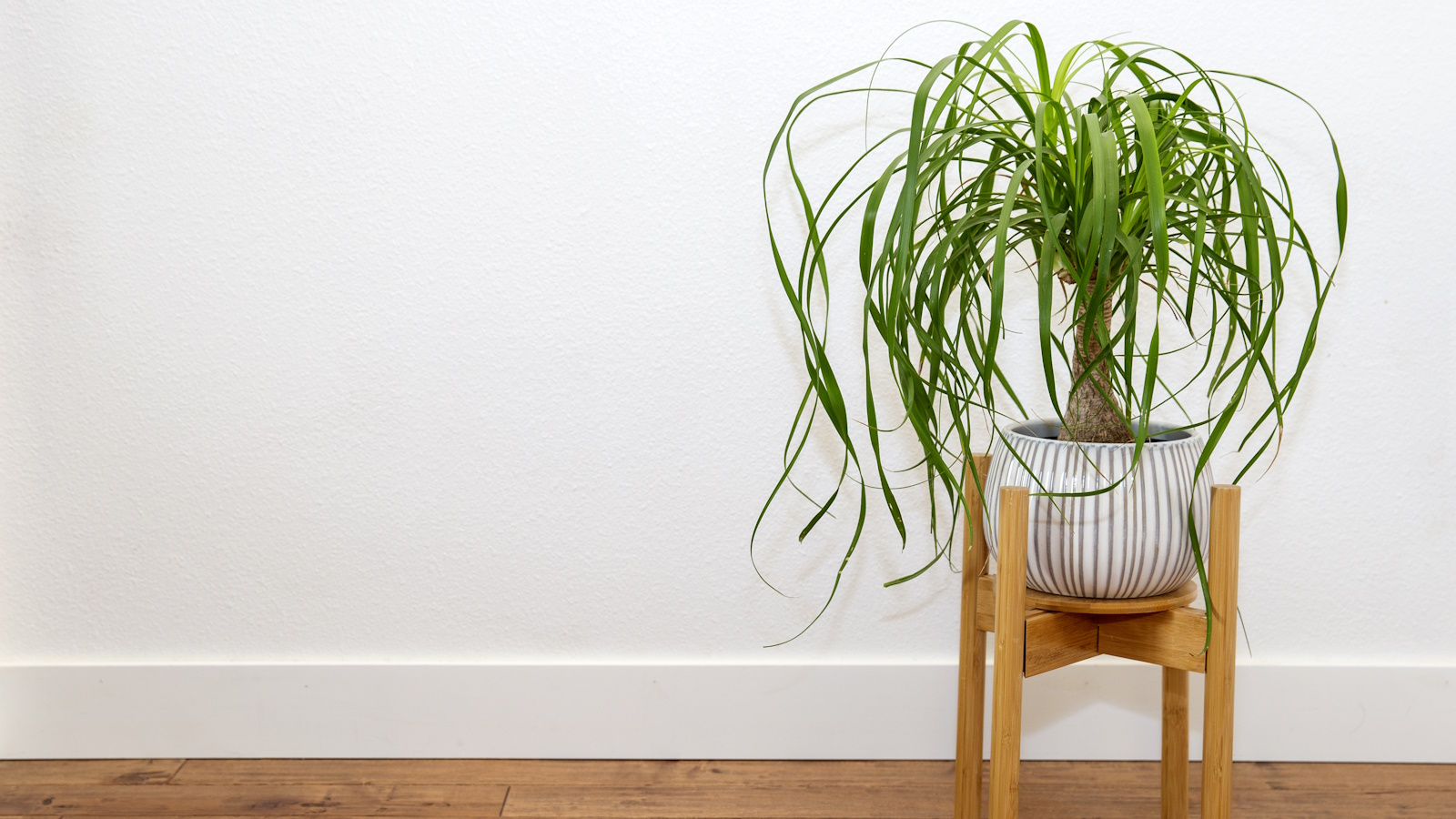
Ponytail palm tree, or Beaucarnea recurvata, is a beautiful houseplant with a sturdy trunk and a fountain of curled foliage, reminiscent of a ponytail hairstyle. It's the perfect addition for houseplant lovers who want to add a tropical feel to their homes.
A unique plant among the best indoor trees, ponytail palms are native to desert areas of south-eastern Mexico, Belize and Guatemala. They range in sizes from one to six feet tall, perfect as small indoor plants for a windowsill or tall indoor plants to fill ground space.
These beautiful plants are easy to care for and will thrive for years if looked after correctly. We've asked experts how to care for ponytail palm trees and they shared their top tips.
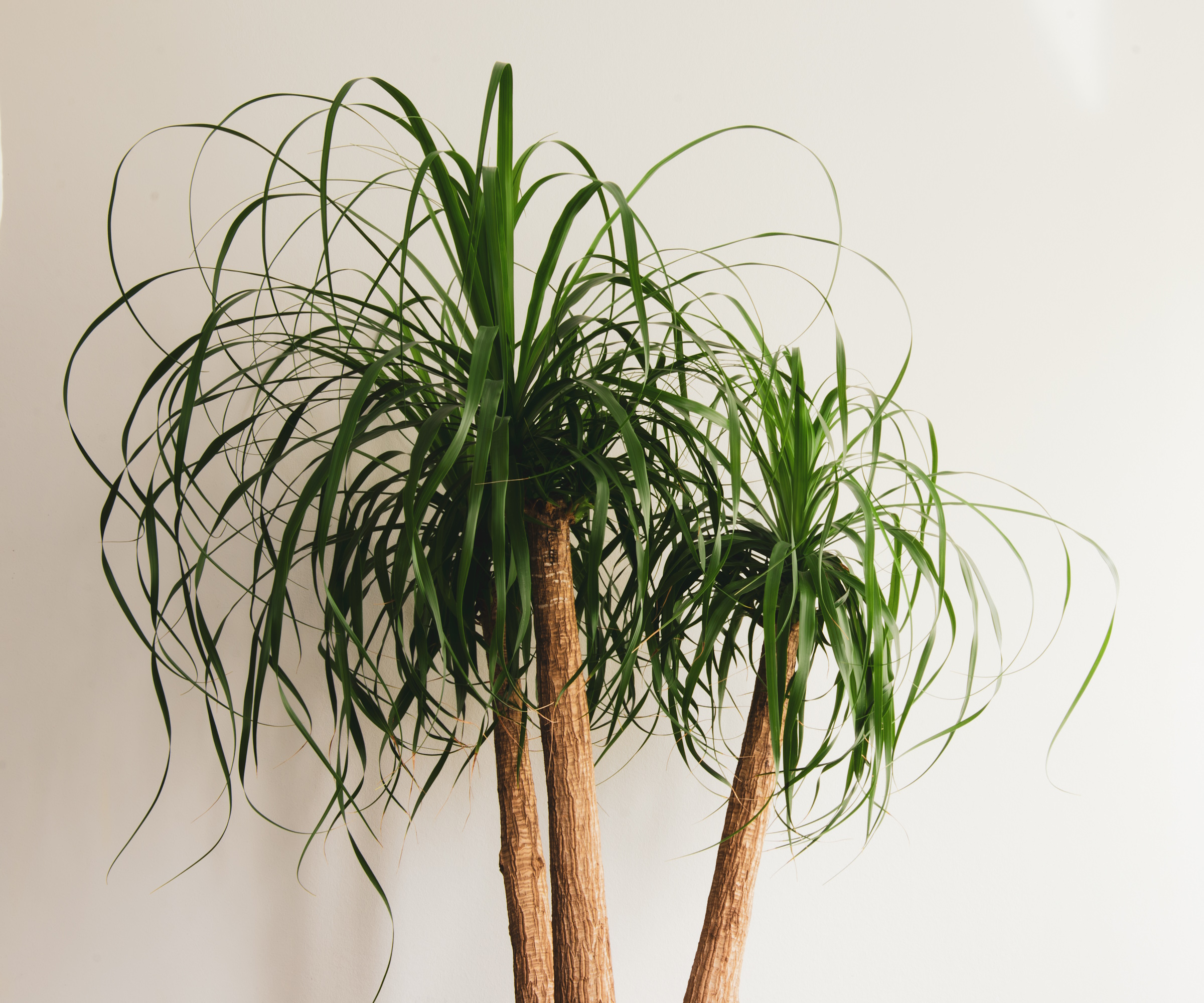
3 expert tips for ponytail palm tree
Ponytail palm trees are low maintenance indoor plants that require just some essential care to stay happy and healthy. Discover expert tips below for caring for these beautiful indoor trees.
1. Give ponytail palms lots of bright, indirect light
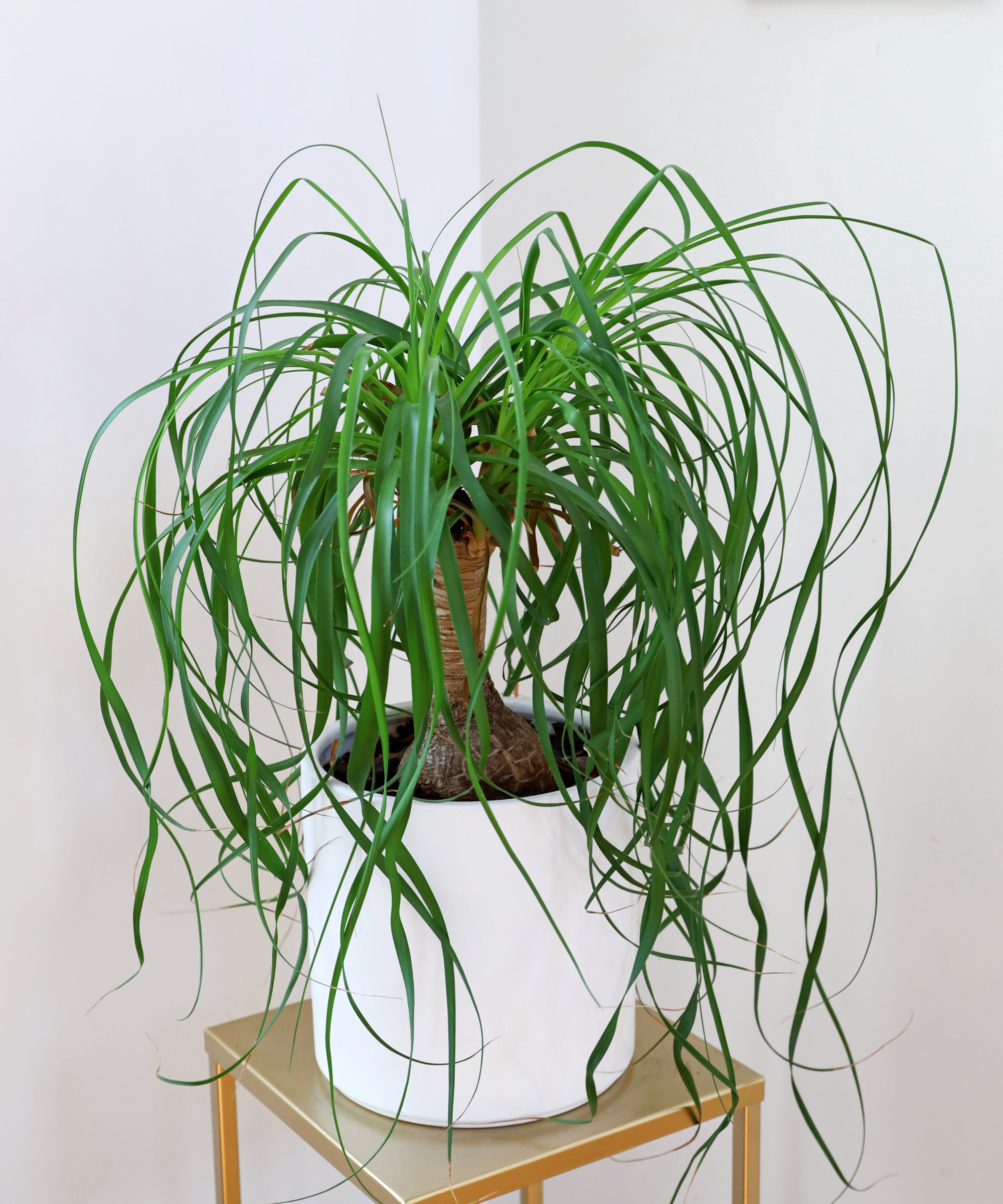
Naturally growing in semi-desert areas in tropical climes, ponytail palms require plenty of bright light to grow happily.
'Ponytail palms will thrive in bright, indirect sunlight, so put your plant near a sunny window,' says Sally Allsop, founder of All That Grows. 'You are best to avoid direct sunlight, as this can scorch the leaves of your plant,' she adds.
Direct sunlight may damage the slender, curling foliage of your ponytail palm, however insufficient light may cause foliage to droop.
These plants are also among the best pet-safe indoor plants so you also don't have to worry about placing it where curious pets may have access.
Once you find a bright spot for it, leave your ponytail palm where it is and these easy indoor plants won't complain.
2. Let your ponytail palm dry out before watering
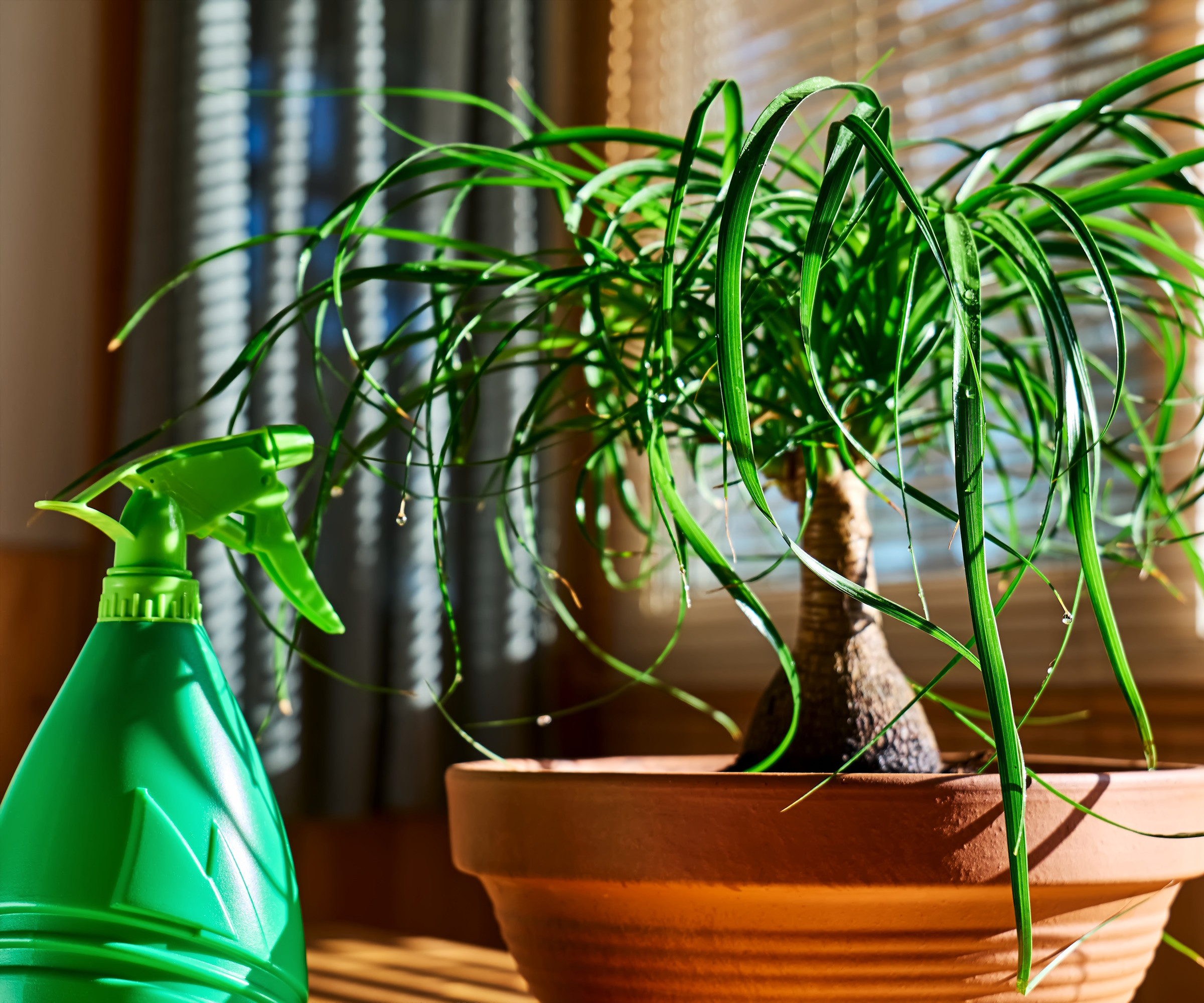
Knowing how to water houseplants correctly is where many go wrong and what causes a lot of indoor plants fail.
'The ponytail palm should be watered sparingly, allowing the soil to dry out between watering,' says Autumn Janus, plant expert from Perfect Plants.
Overwatering is a common indoor plant mistake and may cause your ponytail palm foliage to droop and discolor, or even cause it to suffer from houseplant root rot.
'During the active growing season in spring and summer, it is generally recommended to water the ponytail palm every four to six weeks or when the top inch of the soil feels dry to the touch,' Autumn adds. Take care to adjust watering frequency based on conditions such as temperature and the moisture in your environment.
You can also use something like this moisture meter from Amazon to monitor moisture levels in the soil of your plant.
3. Repot your ponytail palm tree every few years
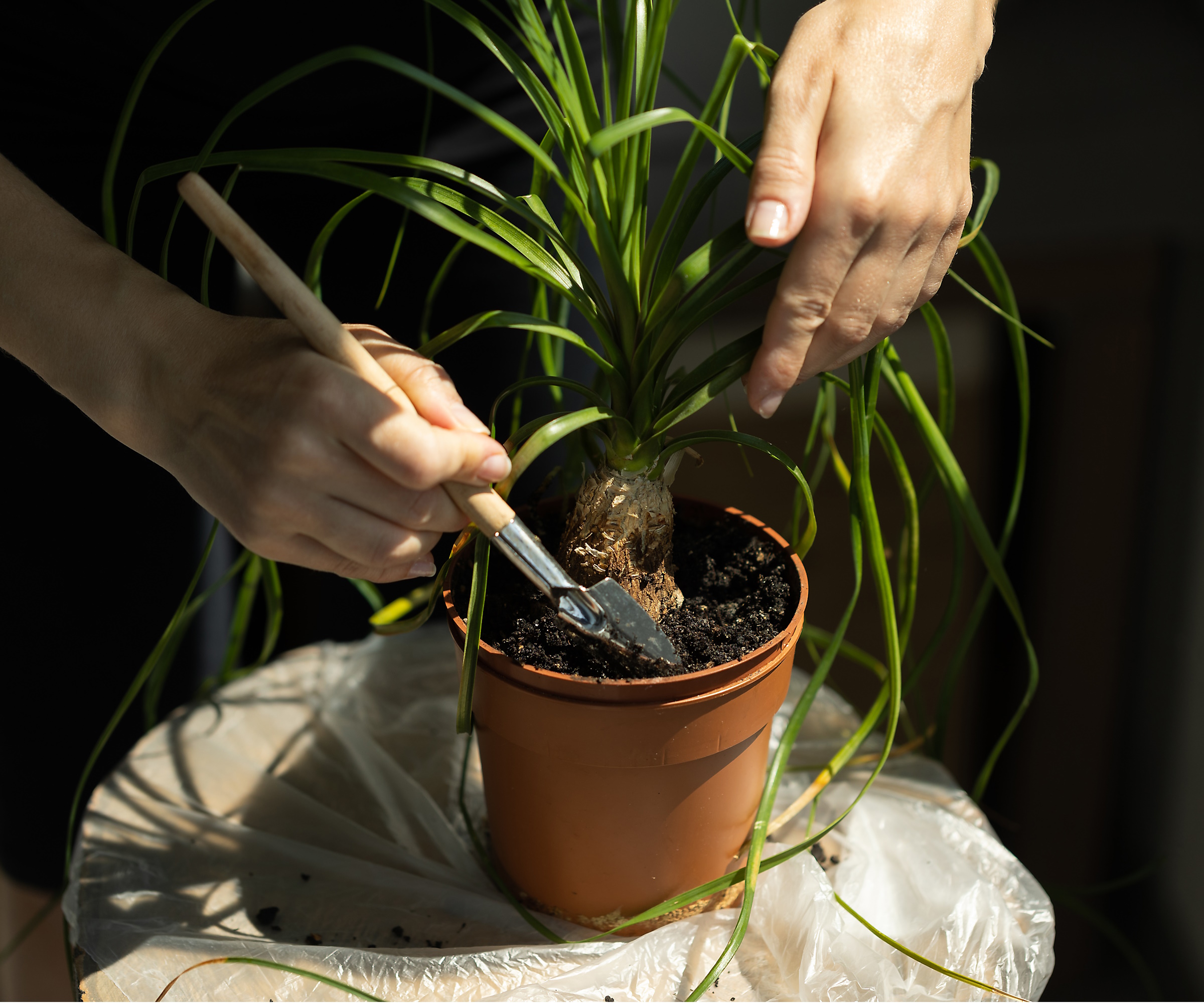
To avoid plants becoming pot bound, it's important to repot them into a larger container as they grow bigger. Unlike fast-growing indoor plants, ponytail palms are slow growers but will still require repotting every few years.
'Generally, it is recommended to repot a ponytail palm every two to three years. However, for larger and more mature plants, repotting may only be necessary every three to four years,' says Autumn.
To identify whether it's time to repot your ponytail palm, gently remove it from its current pot and observe the roots. 'If the roots are crowded or the plant is top-heavy, it may be a sign that repotting is needed,' Autumn adds.
Not repotting a ponytail palm when it gets too big for its current home could cause the foliage to droop and discolor, stunted growth or even death of the plant.
To help with drainage, opt for a container with drainage holes, like these planters with drainage holes and saucers from Amazon.
FAQs
Should I fertilize my ponytail palm tree?
Although not a necessary care requirement, you can fertilize your ponytail palm to encourage growth. You should use a houseplant fertilizer, like this liquid fertilizer for indoor plants from Perfect Plants Nursery, and only apply it during the spring and summer months when the plant is actively growing.
Should I prune my ponytail palm tree?
It can a good idea to prune your ponytail palm to keep it healthy. Remove any dead and damaged foliage with clean and sharp essential gardening tools, like these micro-tip pruning snips from Amazon. Doing so will keep your plant healthy and encourage further growth.
Ponytail palms are beautiful indoor plants that add a green statement to your interiors. They're very easy to care for and will grow happily for years if looked after correctly.
Looking for more houseplant inspiration? Discover other tropical indoor plants to spruce up your home.







